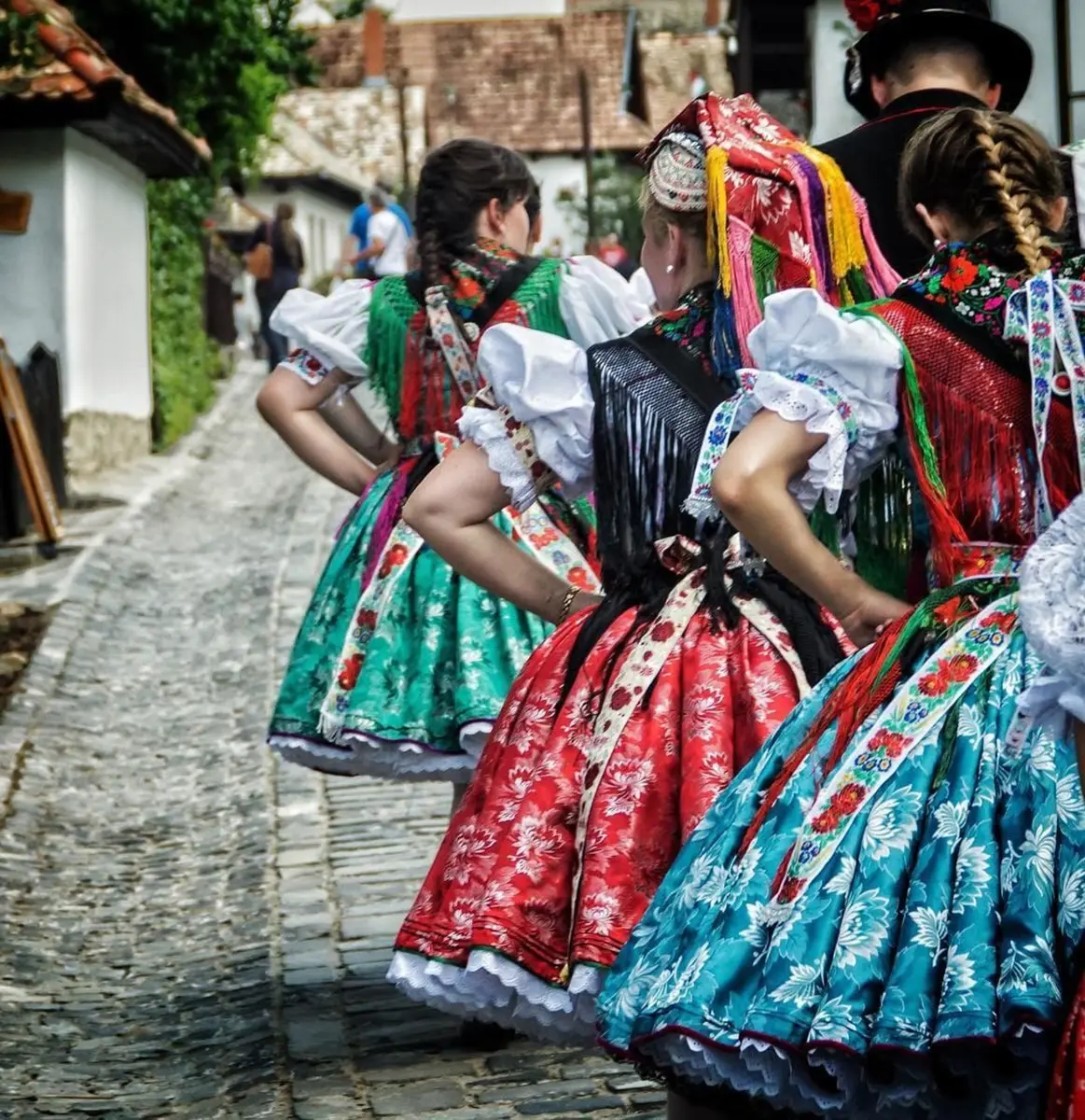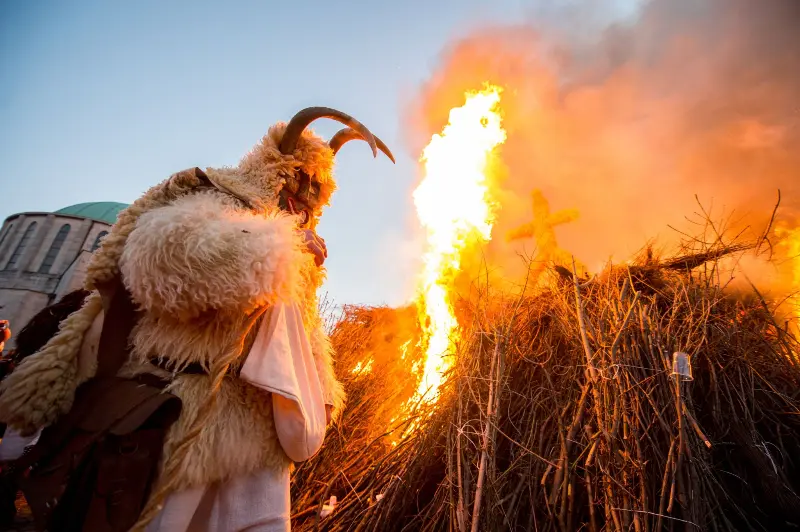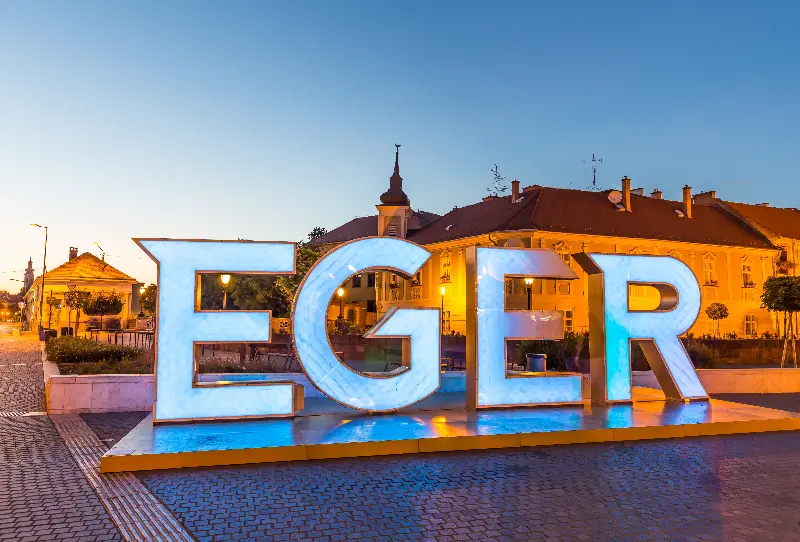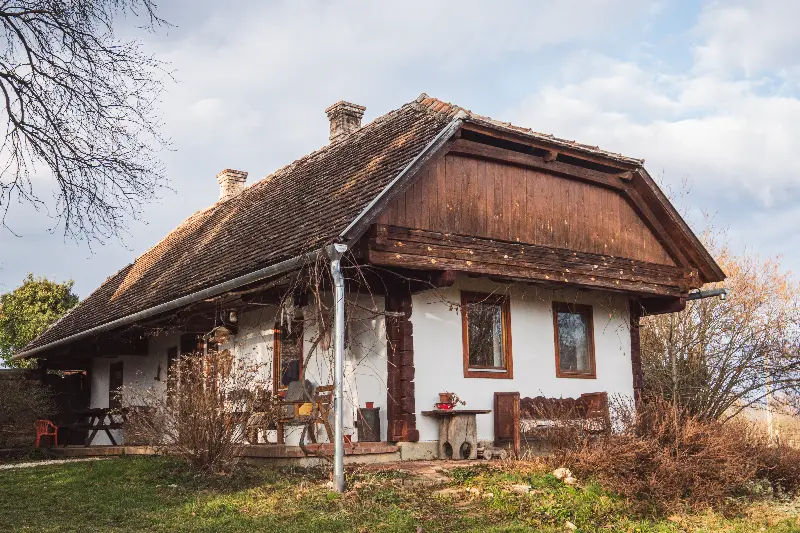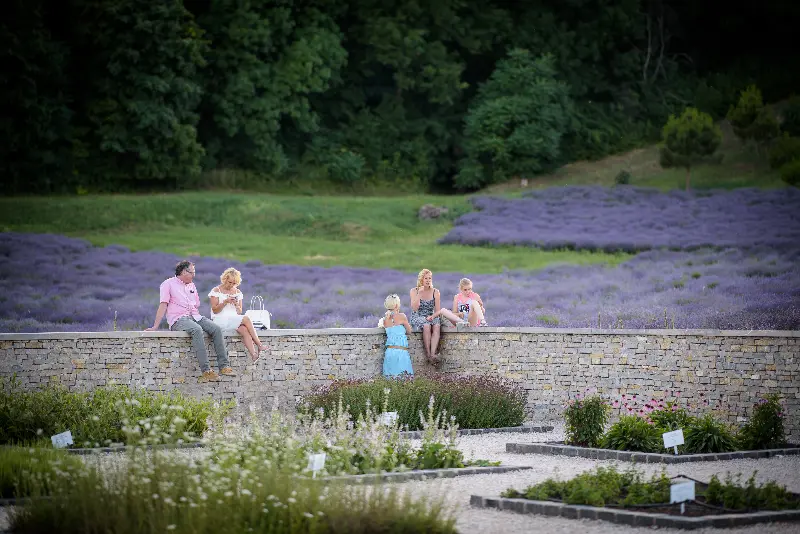
Helyszín címkék:
Our valuable heritage – Busójárás in Mohács and other winter farewells
Transfiguration in the mirror of tradition, or here is the magic of the Busós of Mohács
The Busójárás is a mysterious festival whose roots go back to the time of the Turkish occupation: the Sokac (i.e. the Croats living in Hungary) supposedly drove the Turks out of Mohács by dressing in devilish masks. Many believe, however, that it is more likely that the Busójárás came from Northern Bosnia with the Sokac, after new inhabitants were settled in the depopulated areas after the Second Battle of Mohács in 1687. This magical winter-driving séance, which still takes place today, offers an experience that we, as outsiders, will probably never truly understand. The locals call the festival of transformation “Poklade”, which can also be found in the winter-driving customs of other cultures, but in Mohács it has grown into a real festival. The name "busójárás" was born in the 1930s, when a journalist from Budapest was amazed by the dressed-up busós and described what he saw — this is how this special fun got its name, which has been driving away winter with fun since then.
The Busójárás is a mysterious festival whose roots go back to the time of the Turkish occupation: the Sokac (i.e. the Croats living in Hungary) supposedly drove the Turks out of Mohács by dressing in devilish masks. Many believe, however, that it is more likely that the Busójárás came from Northern Bosnia with the Sokac, after new inhabitants were settled in the depopulated areas after the Second Battle of Mohács in 1687. This magical winter-driving séance, which still takes place today, offers an experience that we, as outsiders, will probably never truly understand. The locals call the festival of transformation “Poklade”, which can also be found in the winter-driving customs of other cultures, but in Mohács it has grown into a real festival. The name "busójárás" was born in the 1930s, when a journalist from Budapest was amazed by the dressed-up busós and described what he saw — this is how this special fun got its name, which has been driving away winter with fun since then.
The accessories – both the masks and the busós’ clothes – are passed down from generation to generation, each piece having its own story. Soot and ash also play an important role during the event: soot ensures the busós’ incognito, while the ash symbolizes rebirth.
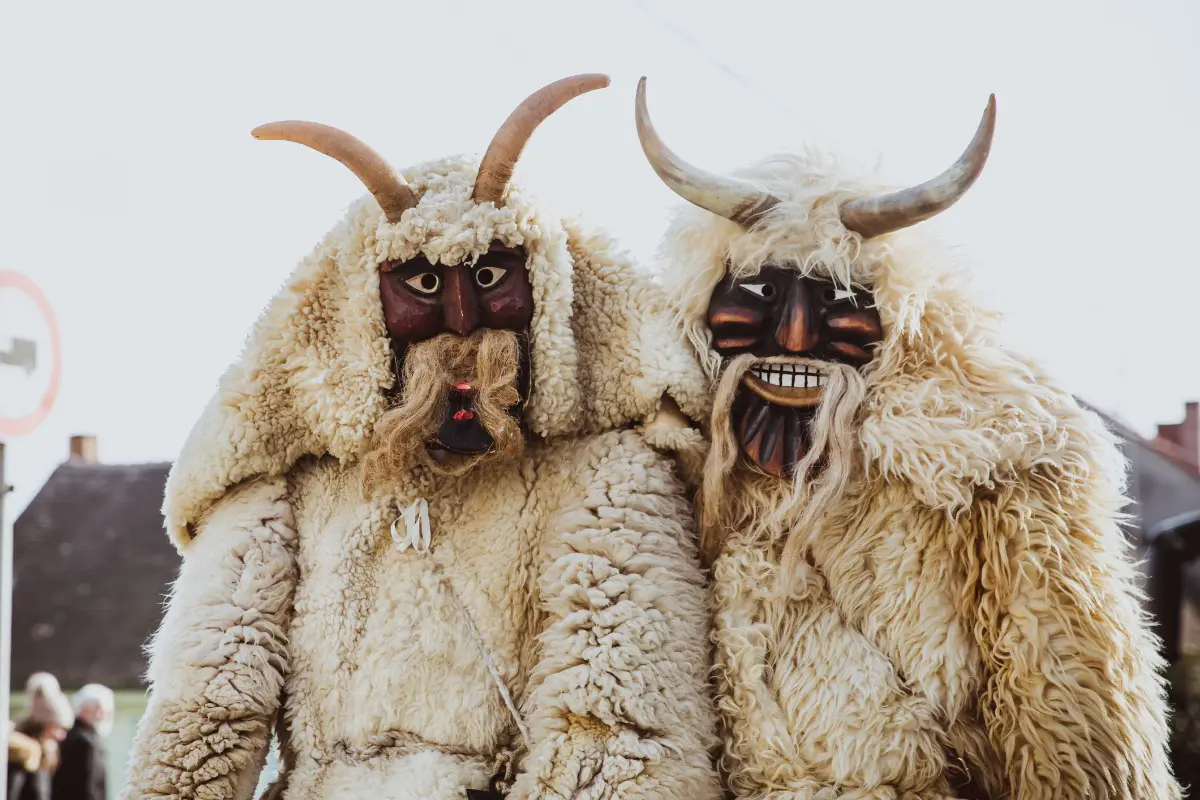
The busós and the visitors drive away winter together, which creates a unique interaction based on ancient traditions. During the festival, it is not uncommon for us to come across a little soot or feather, which the busós and the Sokác girls sprinkle on the visitors as fertility magic. The most visited day of the festival is Carnival Sunday, which is opened by a cannon shot, and at the end of the day the busós light the bonfire like goblins, which symbolizes purification, the expulsion of winter and evil. The Busójárás is not our only carnival custom. Our diverse traditions enrich the carnival period to this day, and in many rural settlements different, unique customs have developed, which are still cherished today. If we are lucky, we can be a part of this too!
Hope in Novaj
"Hope" is a winter burial and spring waiting tradition of Novaj, at the end of the carnival period. Its central element is a "pseudo-wedding procession", in which young men dress up in characteristic masks, such as tinkers or chimney sweepers. These cheerful simulators, accompanied by music and clinking, walk through the streets of the village and soot girls and women, as it is believed that soot cleanses them of evil and brings good luck.
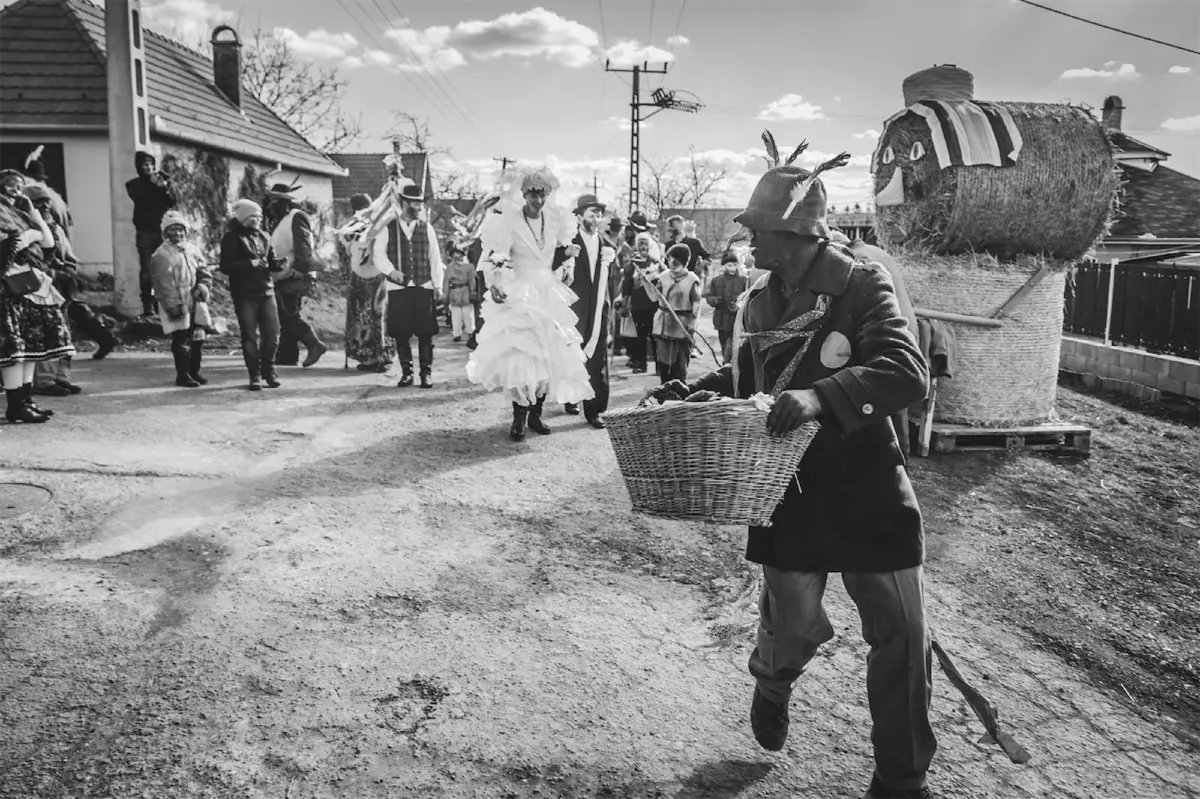
Filled, round, sprinkled with powdered sugar! Heading to the doughnut festival!
The National Carnival Doughnut Festival focuses on the carnival doughnut. The tradition spread in Hungary in the 19th century, especially in Transdanubia, and since then it has been an indispensable part of the carnival season. During the festival, visitors can taste various flavoured doughnuts, learn the tricks of doughnut baking from local women, and even participate in doughnut baking competitions. In addition, costumed carnival parades, fairs, and cultural programmes entertain the audience.
The winter farewell and spring waiting traditions appear in different forms throughout the country, each of which serves to bring communities together and celebrate renewal. The customs associated with the carnival period end with symbolic rites of driving away winter, before giving way to the Easter holiday circle, which bring about the true arrival of spring. The fruit of these traditions in Hungary is believed by many to reach its peak in Hollókő, where the past and the present come to life in perfect harmony during the Easter festival.
The whole village is in bloom: Easter in Hollókő
The Easter Festival in Hollókő is a real celebration of Hungarian Easter customs and Palóc gastronomy, where traditions literally come to life in one of the most beautiful small towns in Hungary. During the festival, local girls dressed in traditional costumes are sprinkled with cold well-water, thus preserving their beauty. In the UNESCO World Heritage site of Hollókő Old Village, where 67 listed houses still look as they did a hundred years ago, visitors can fully immerse themselves in the past. Among the programmes, folklore shows, concerts, craft workshops and gastronomic experiences await those interested. Egg painting, tasting ham, and tasting wines and brandies all contribute to an authentic, unforgettable Easter experience.
